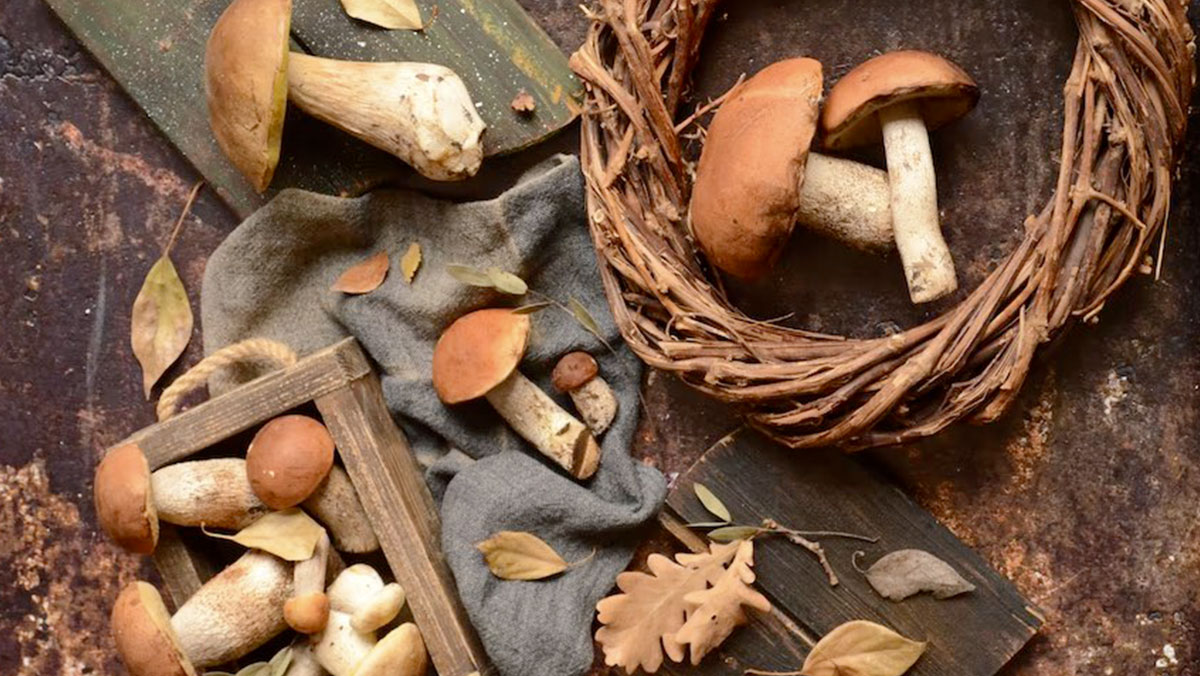Mushroom Matters: Magic Mushroom Theories and the Mycelial Future
Mushroom Matters: Magic Mushroom Theories and the Mycelial Future
- Did Santa Claus Come from Magic Mushrooms?
- The Sacred Mushroom and the Cross
- The McKenna Stoned Ape Theory
- Magic Mushrooms and the New Wave of Psychedelic Acceptance
Mushroom Matters: Magic Mushroom Theories and the Mycelial Future
By Masha Belinson
Welcome to ACS Laboratory’s inaugural Mushroom Matters blog.
Mushrooms are in the spotlight. Even if you haven’t read “How To Change Your Mind” or watched Fantastic Fungi, you’ve probably heard about psilocybin mushrooms in the news. Also known as “magic mushrooms,” these medicinal fungi are revolutionizing mental health.
Like all entheogens, including cannabis, mushrooms have been around for thousands, if not hundreds of thousands of years. The Aztec people, for example, used magic mushrooms to connect with the spirit world and receive wisdom and healing.
The mushroom sacrament was known as teonanácatl, or “flesh of the gods.” If you look into the history of psychedelic mushrooms, you’ll find troves of serious scholarship along with the kind of theories that leave you digging through the internet rabbit hole for hours.
For our first Mushroom Matters, we’ll dive into three of those theories.
Did Santa Claus Come from Magic Mushrooms?

Amanita muscaria is a psychedelic mushroom common in the wintery lands of Siberia. It’s different from psilocybin mushrooms in three significant ways: its hallucinogenic effects are due to ibotenic acid and muscimol instead of psilocybin, it’s bright red, and it may be the origin of Santa Claus.
To most, Santa Claus is a jolly, sleigh-riding character popularized by Clement Clarke Moore’s 1822 poem, “’Twas The Night Before Christmas.” But what if Santa Claus is much older and more mycelial than we thought?
As articulated by James Arthur in his book, “Mushrooms, and Mankind”, Amanita muscaria mushrooms were commonly used by Siberian shamans. During the winter solstice, the shamans would collect the mushrooms from underneath birch trees, dry them out on the branches, and distribute them to villagers as gifts. Because heavy snow would frequently block the front entrances of the villagers’ homes, these shamans, dressed in red and white to honor the mushroom, would throw bags of the fungus through an opening in the roofs.
As the theory goes, the Christmas tradition of presents under a tree, hanging up ornaments, and the gift-filled bag of Santa Claus could all be traced to the Amanita muscaria mushroom.
And let’s not forget about flying reindeer. Reindeer also consume Amanita muscaria, and shamans would drink their urine to avoid the toxicity of the raw mushroom. In the psychedelic state, reindeer whizzing through the sky becomes a lot more plausible.
So instead of the “’Twas The Night Before Christmas,” you might want to tell a different story next year.
The Sacred Mushroom and the Cross

Need a Test or Have a Question
n addition to Santa, the Amanita muscaria mushroom has also been proposed to be the origin of Christianity.
In his book, “The Sacred Mushroom and the Cross”, British archaeologist John Marco Allegro argues that Christianity arose from fertility cults that used psychedelic mushrooms as a gateway to God. He points to images like the one above, on the fresco of the Chapel of Plaincourault, which depicts Adam, Eve, and the Serpent along with a giant mushroom that looks very similar to Amanita muscaria.
The scientific community generally rejected Allegro’s book, but a new book by Brian Murauesku, called “The Immortality Key,” brings light to similar claims.
With much more research to back it up, Murauesku hypothesizes that Christianity grew out of the practices of pagan cultures, including the consumption of psychedelic wine. Jesus was the equivalent of the Greek god of wine. Dionysus and followers would consume the hallucinogenic wine to connect with him more powerfully.
With the reemergence of psychedelics as a serious subject of study, an increasing amount of scholarship is being dedicated to the role of psychedelics in Christianity and every major world religion.
The McKenna Stoned Ape Theory

What if psychedelic mushrooms played a pivotal role in the evolution of early humans?
This is the proposal of Terrence McKenna, the 1960s psychedelic advocate, in his book, “Flesh of the Gods”. McKenna notes that anywhere from 100,000 to 300,000 years ago, Homo sapiens evolved from their predecessors, Homo erectus. Their brains tripled in size, they developed language, and they began executing more complex cognition.
How did this happen, McKenna wondered? As our ancestors, who were cattle-herding nomads, moved out of Africa, they likely would have eaten psilocybin mushrooms that grew in the favorable conditions of cow dung. McKenna’s theory is that because psilocybin enhances creativity and radically elevates consciousness, these mushrooms helped accelerate our ancestors’ evolution.
As Dennis McKenna, an ethnobotanist and Terrence’s brother, says: “Language is essentially synesthesia. Language is the association [of] apparently meaningless sound...with the complex of meaning.” In other words, psilocybin may have helped early Homo sapiens tie mental concepts with sounds to create words.
Magic Mushrooms and the New Wave of Psychedelic Acceptance
While these theories remain the territory of late-night internet searches and interesting dinner conversations, research into the medicinal properties of psychedelic mushrooms has recently captured the cover of Newsweek as the most significant advancement in treating depression since Prozac.
While some people manage treatment-resistant depression with psilocybin, others take small amounts in a practice called micro-dosing to enhance their creativity. Additionally, as they have for millennia, many others have private mystical experiences that completely revolutionize their connection to the universe. Luckily for us, educational media companies like Double-Blind and Third Wave continue to destigmatize and demystify this information for the world.
At ACS Laboratory, we’re excited to explore these topics through future Mushroom Matters blogs. Until then, we hope we’ve piqued your interest and made you reconsider Santa, religion, and human evolution— if only just a little bit.
Come hear me speak on the topic at Cannadelic Miami on February 6th.








.png)
.png)
.png)
.png)
.png)